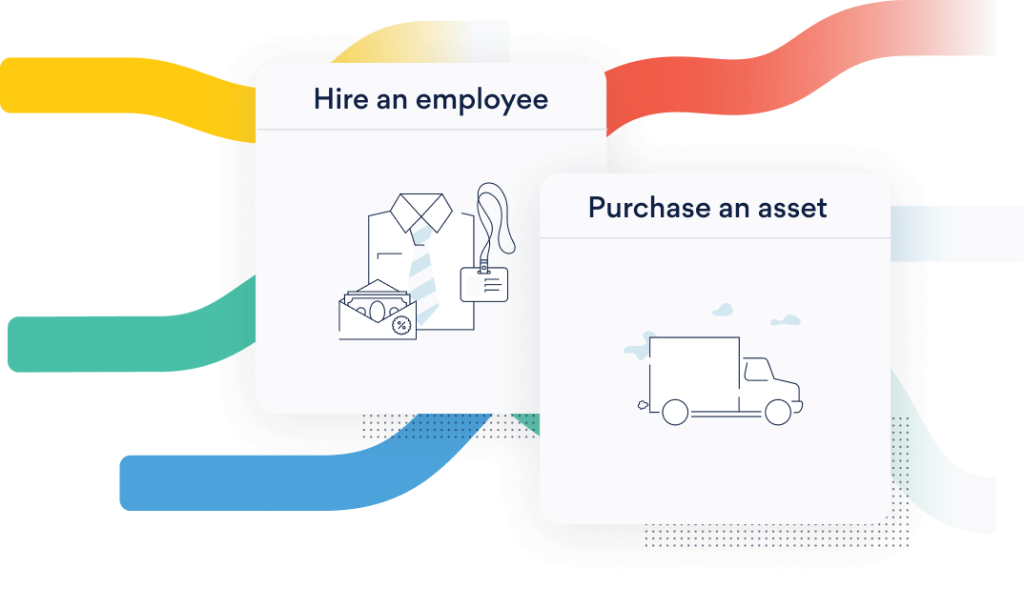The risks of creating and running a startup or small business are part of the journey, and unfortunately, there are many factors that are beyond your control such as shifting market trends or changing economic factors. According to a recent article in Business Insider venture capital funding is not easy to come by these days. It’s cratered to levels not seen since before 2020. And there are now more than 50,000 venture-backed companies in the US – a figure that’s doubled since 2016 – that are at risk of “high capital shortage.”
Every company’s situation is a little different based on their operating expenses and whether they’ve gotten fresh funding already. However, unless you’re an AI startup, the chance of a VC check has been slim to none. So what are their options? Likely a sale or shutting down.
Much of bookkeeping and accounting involves evaluating the past performance of a business’s debts, liabilities, revenue, cash flow, and expenses, etc. The past financial numbers can demonstrate business success to both shareholders and the public.
Planning and preparing for the future, however, is just as important especially if having enough cash flow and operating revenue to keep the lights on is at risk.
One way to prepare for the future is through conducting financial forecast modeling scenarios.

Background – What is Financial Forecasting
Financial forecasting, modeling or projections is the procedure of analyzing past and current financial data to predict a company’s future financial performance. The goal of financial forecasting is to analyze past, current, and future fiscal data to inform and build accurate and reliable financial projections. Forecasts or projections are typically applied to assist with budgeting, financial modeling, and other key financial planning activities.
For example, having strong financial projections can help potential investors get a sense of how your current number and metrics translate into growth and success in the future. Financial forecasting software tools can help to link data from finance, sales, and operations, to build and compare financial planning scenarios that represent your business considerations: aggressive, conservative, “what-if,” and more. You can design models to include nuances of goods, services, subscriptions, licenses, and other business models.

For example, an article published in Harvard Business School stated that “financial forecasting is important because it informs business decision-making regarding hiring, budgeting, predicting revenue, and strategic planning for anticipated expenses for an upcoming period of time. It also helps you maintain a forward-focused mindset.
Financial forecasting also can involve the creation of specific financial statements that reflect risk and outlook based on relevant facts and trends. These statements are sometimes also called pro-forma statements.
Key Takeaways
- Forecasting involves predicting future outcomes.
- In finance, companies use forecasting to estimate future earnings and data.
- Traders and analysts apply forecasts in valuation models, trade timing, and trend spotting.
- Forecasts typically rely on historical data analysis.
- Since the future is uncertain, forecasts must be continuously revised. Actual results can differ substantially from projections.
Some Benefits of Financial Forecasting for a Company
Helps With Annual Budget Planning
The budgeting process outlines your business’s projected cash flow, including goals, financial positions, anticipated revenues, and more. Financial forecasting complements budgeting by predicting future revenue. Financial forecasting enables you to create budgets with greater accuracy. Together, budgeting and forecasting map out your company’s financial roadmap.
Helps To Set Realistic Business Goals
Financial projections help predict specific growth or decline projections for your business. With these quantitative forecasts, business leaders can set achievable goals grounded in realistic expectations. Accurate forecasts also inform sales projection methodologies. In short, financial forecasting enables data-driven goal setting and sales planning that reflect your company’s true anticipated trajectory.
Identify Problem Areas of The Business
Financial forecasting also provides insight into your past financial performance. By revealing potential future issues, it allows you to proactively address problems before they occur. Understanding historical performance through forecasting empowers businesses to course-correct and mitigate risks ahead of time.
Minimize Financial Risks
Financial forecasting helps guide major financial decisions, rather than leaving them to chance. With forecasts of projected financial conditions, businesses can avoid the risks of overspending and uninformed choices. The more accurate the forecast of an upcoming fiscal period, the lower the risk associated with key money moves. Forecasting provides guardrails for prudent spending aligned with future revenues.
Can Help With Raising Investor Capital
Financial forecasting reports let you project every detail of your performance and share the months, quarters, and years that illustrate your startup’s story. Build investor-ready financial projections from your existing data.
Types of Financial Forecasting
There is an article by Cultivate Advisors that breaks down the types of forecasting:
- Sales Forecasting – a process that helps you to more accurately predict the amounts of products or services that your company will likely sell within a certain fiscal period. There are two sales forecasting methodologies that you can use: bottom-up forecasting and top-down forecasting.
- Cash flow forecasting – helps business leaders manage their liquidity and determine if they will have enough cash on hand to meet their financial obligations. One thing to note is that cash flow forecasting methods are the most beneficial when they’re used in the short term.
- Budget forecasting – helps to create expectations around the financial performance of your company and informs major financial decisions about the ideal budget outcome. This type of financial forecasting relies heavily on the data from the budget which relies on the financial forecasting data.
- Income forecasting – takes data from your income statement and it’s used to analyze the past revenue performance of your company combined with your current growth rate to determine future income. When you’re conducting cash flow and balance sheet forecasting, this is integral to your success. Lenders may utilize data from past financial statements to determine how much credit they want to provide to the company.
- Expense forecasting – methods help to determine the percentage relationship between expenses and revenue. Once this percentage is determined, it is then used to help with financial planning and financial modeling for future expenses.
7 Common Financial Forecasting Methods
Let’s examine seven different financial forecasting methods that you can implement at your company. There are two primary methods: quantitative and qualitative forecasting. Quantitative methods of forecasting exclude expert opinions and utilize statistical data based on quantitative information. Quantitative forecasting models include time series methods, discounting, analysis of leading or lagging indicators, and econometric modeling that may try to ascertain causal links.
When creating accurate forecasts, businesses typically rely on quantitative methods that leverage historical data.
Quantitative Methods
Percent % of Sales
The percent of sales approach forecasts future financials as a percentage of projected sales. For instance, cost of goods sold often rises proportionally with revenue. So applying the estimated sales growth rate to COGS and other items can forecast their future values. To determine percentages, divide historical account values by past sales, assuming these ratios remain constant.
Straight Line Method
This technique assumes a company’s growth rate stays steady. To forecast revenue, multiply the previous year’s total by the historical growth percentage. While easy to calculate, straight line forecasts don’t account for market fluctuations.
Moving Average
With moving averages, businesses average data from prior periods to predict the future. Examining historical highs and lows helps with short-term forecasts. For example, average the past quarter’s sales to estimate next month’s. Moving averages can forecast various metrics, especially revenue.
Simple Linear Regression
This model forecasts a dependent variable based on its relationship to an independent variable. The dependent variable is the forecasted amount, while the independent variable influences it. The regression line equation is:
Y = BX + A
Y = Dependent variable B = Regression slope X = Independent variable A = Y-intercept
Multiple Linear Regression
When multiple factors impact performance, multiple regression makes a more accurate forecast. It accounts for several related variables. For reliable results, the dependent and independent variables must have a linear relationship. And the independent variables can’t be too closely correlated.
Qualitative Methods
When it comes to forecasting, numbers don’t always tell the whole story. There are additional factors that influence performance and can’t be quantified. Qualitative forecasting relies on experts’ knowledge and experience to predict performance rather than historical numerical data.
Delphi Method
With the Delphi method, companies consult experts to forecast performance based on market analysis.
A facilitator sends questionnaires to experts requesting forecasts drawn from their specialized knowledge. The facilitator summarizes the responses and circulates them back to the experts for additional feedback, repeating the process until a consensus is reached.
Market Research
Vital for organizational planning, market research provides a holistic view considering competition, market fluctuations, and consumer patterns. It’s especially useful for startups lacking historical data. Financial forecasting helps new businesses attract investors and budget during the early months.
Effective market research starts with a hypothesis and identifying optimal research methods. Consumer surveys offer insight into buyer behavior when numerical data is unavailable to guide decisions.
Conclusion
Financial forecasting is never a guarantee, but it’s critical for decision-making. Regardless of your business’s industry or stage, it’s important to maintain a forward-thinking mindset—learning from past patterns is an excellent way to plan for the future. Plans, budgets, and forecasts need to reflect the reality of today’s uncertain landscape. Using outdated information sets up risks missed targets and misallocated funds.
As you can see, financial forecasting is an integral component of your long-term business planning. If you aren’t sure where to begin or you have questions about how to go about this process contact Huckabee CPA with any questions and free consultation.










